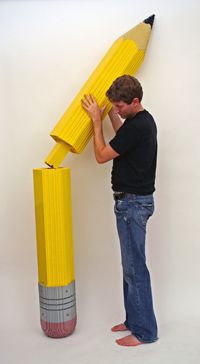Lego Art
Ready to create a Lego art sculpture? Once you've got your resource material together and have a sense of where your project is going, all it takes is bricks, time and patience. According to Sawaya:
Lego bricks are tiny compared to sculpture-scale projects. "Large pieces usually involve sketching out ideas, but the true test is being able to picture the finished model in my mind. Since sculpting with Lego is a slow process," Sawaya says, "I have to be able to recognize early on where pieces need to go to develop the shape of the piece as I build upwards. It takes a lot of pieces to get this right, and often I will tear down portions that I have built, so as to rebuild them differently."
Advertisement

Builders' construction techniques vary, but most people start at the bottom and work up and out. "The process of sculpting with Lego is usually a bottom-up approach," says Sawaya. "Meaning, I start at the bottom and build my way to the top of the piece. This generally means that balancing issues have already been dealt with by the time I finish a model."
Whether you're building by trial and error or with detailed sketches, there are a few techniques that will help make your final construction sturdy. Staggering bricks, the way builders stagger bricks when building houses, makes wall portions stronger. You can also brace the interior of hollow structures with columns and beams made from additional bricks. A good resource for learning about making your own Lego constructions is Allan Bedford's The Unofficial Lego Builder's Guide. You can also find lots of information on building and creating in the online publication BrickJournal.
We'll look at some of our favorite Lego art sculptures in the next section.
